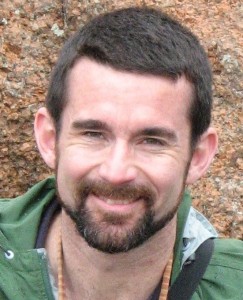 Both seasoned clinicians and learners in today’s medical environment receive both explicit and unspoken messages that the best medicine involves advanced technology, the latest medications, and highly specialized care. Evidence based medicine, on the other hand, advocates the “conscientious, explicit, and judicious use of current best evidence in making decisions about the care of individual patients,” and campaigns such as “Choosing Wisely” and The BMJ‘s “Too Much Medicine” are encouraging critical thought as to what amount of “medicine” is appropriate for patients and when.
Both seasoned clinicians and learners in today’s medical environment receive both explicit and unspoken messages that the best medicine involves advanced technology, the latest medications, and highly specialized care. Evidence based medicine, on the other hand, advocates the “conscientious, explicit, and judicious use of current best evidence in making decisions about the care of individual patients,” and campaigns such as “Choosing Wisely” and The BMJ‘s “Too Much Medicine” are encouraging critical thought as to what amount of “medicine” is appropriate for patients and when.
While evidence based medicine can be one helpful guide to choosing wisely and avoiding doing too much in medicine, evidence can also help clarify those clinical situations in which “less” is actually “more”—ie, when a less invasive, less technological, or less “medical” approach may lead to better outcomes. For example, bandaging alone appears better than bandaging plus suturing for small lacerations of the hand, and performing a pelvic examination without stirrups may improve a woman’s experience, without decreasing the quality of pap smear specimens obtained.
An area that remains inadequately explored and inadequately operationalized for clinical practice is the conceptual area encompassing evidence for when a “less” medical, invasive, or technological approach may actually be superior. Exploring, appraising, and translating into clinical practice the body of literature that provides evidence that “less” is “more” could provide several parallel beneficial outcomes:
• Encouraging the use of lower cost approaches to care that benefit patients.
• Encouraging critical thought on the part of learners and clinicians as to the nature of medicine—is it about medication and technology, or about evidence for best care of patients?
• Encouraging further development of critical appraisal skills.
After posting some initial thoughts on this over a year ago, I’ve doodled, fiddled, made a couple of false starts and one meeting presentation, and finally put together a basic web resource to begin cataloging examples of clinical evidence for when “less” is actually “more”: https://lessismoreebm.wordpress.com/
This index is currently a personal (and extremely part time!) project, which aims to make literature documenting when “less is more” available in a searchable and accessible format.
• Each entry provides the title and a short summary of a published article, with a link to the PubMed mobile entry for that article.
• This information is meant for education only—clinical use of this information requires appropriate clinical education, and incorporation with all relevant clinical details for a given patient case.
• The website is formatted to (hopefully!) work well on mobile devices (in order to enhance portability and useability).
• “Strength of Recommendation” ratings are based on the Strength of Recommendation Taxonomy (“SORT”) developed by the American Academy of Family Physicians.
Have a look, do a search (it’s a pretty small index so far), see what you think. Is this useful for your practice? Does it give you some ideas for teaching? Might this be a way to re-set expectations of what we think of as the “best” medicine?
William E Cayley Jr practices at the Augusta Family Medicine Clinic; teaches at the Eau Claire Family Medicine Residency; and is a professor at the University of Wisconsin, Department of Family Medicine.
I declare that I have read and understood BMJ policy on declaration of interests and I have no relevant interests to declare—the “less is more” index project is a free, noncommercial, educational resource.